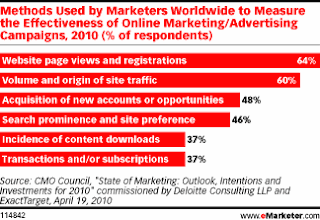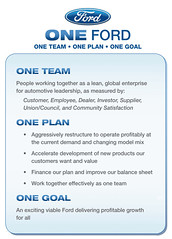 We often talk about social media ROI being measured differently. These are different behaviors and we should be applying new and different measurement standards, right? One of my favorite demonstrations of this is K.D. Paine’s legendary acronymn HITS = How Idiots Track Success.
We often talk about social media ROI being measured differently. These are different behaviors and we should be applying new and different measurement standards, right? One of my favorite demonstrations of this is K.D. Paine’s legendary acronymn HITS = How Idiots Track Success.
A recent eMarketer article asked Is the Click Still King? To the average user, there are so many ways to engage with a site. So you would think that there would be more relevant and prevalent ways of measuring success. But take a look at the top methods that both the CMO Council and Chief Marketer respondents indicated were important:


Click-throughs and website views. How very 1999.
Although, I will give the CMO Council the edge on this one, with looking at registrations, which tells you a little bit about actions taken and level of commitment to engage. That’s a positive thing. But it seems like we’re still treating the Web like a version of television, where “eyeballs” are what’s important.
Take a look farther down those charts and see some of the interesting ways of measuring success: content download, transactions, engagement (which is a little vague), and increased knowledge. Those are all methods of demonstrating effectiveness that can determine your content strategy and marketing channels moving forward. But ultimately, each time a campaign is launched, the methodology for measurement needs to be customized to the goal at hand. Click-throughs and hits are not a universal metric for every campaign.
Some metrics that might appeal to me as a marketer include:
- Likelihood of a customer to become an advocate for my brand
- The spread of information across the Web – especially via social tools
- Sentiment of comments generated by a post or campaign
- Effective integration of offline calls to action and online actions
These are just a handful of suggestions for different types of measurement. As I said, it depends on what you’re trying to accomplish. What are some unique and different measurement standards that you’ve seen evolving?
Scott Monty
Photo credit: raneko (Flickr)

 We often hear of social media being equated with tools and platforms. But it’s really much more than that.
We often hear of social media being equated with tools and platforms. But it’s really much more than that.